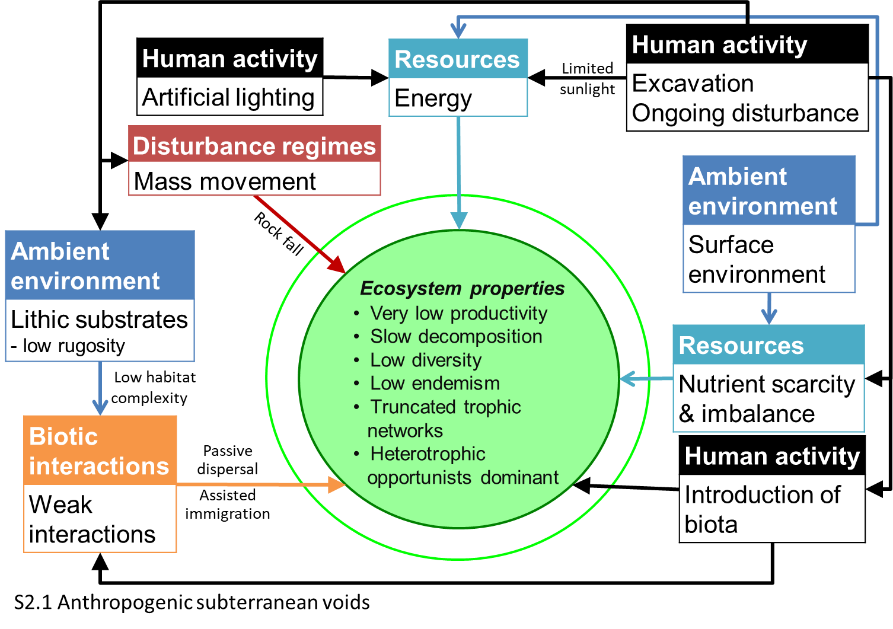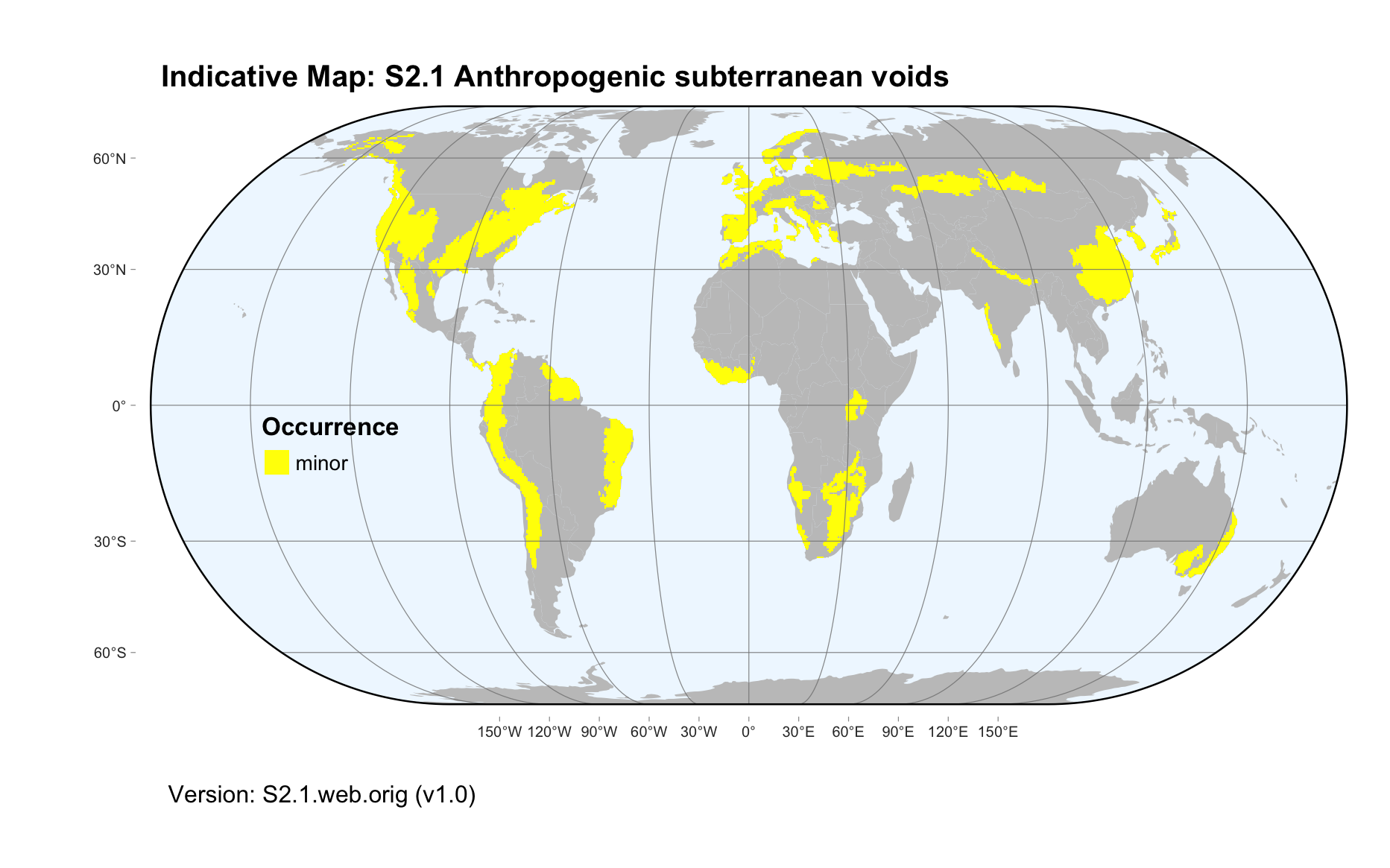Global ecosystem typology
Alternative site for the Global ecosystem typology with additional information for ecosystem profiles and indicative maps.
This site is maintained by jrfep
S2.1 Anthropogenic subterranean voids
Biome: S2. Anthropogenic subterranean voids biome
Contributors:
(texts)
Industrial excavations create artificial voids that resemble caves. Like caves, they lack inputs of solar energy, and plants and herbivores are absent, except at their openings or around artificial lighting. They are colonised by opportunistic invertebrates and vertebrates, and microbes from the rock matrix or imported materials. Diversity is low, but depends on proximity to openings, human activity during occupation and time since excavation.
Key Features
Dry or humid subterranean voids created by mining or infrastructure development and colonised by opportunistic microbes, invertebrates and sometimes vertebrates..
Overview of distribution
Associated with urban and industrial infrastructure worldwide.
Profile versions
- v1.0 (2020-01-20): DA Keith
- v2.0 (2020-05-31): DA Keith; TM Iliffe; V Gerovasileiou; B Gonzalez; D Brankovits; A Martínez García
- v2.01 ():
- v2.1 (2022-04-06): DA Keith; TM Iliffe; V Gerovasileiou; B Gonzalez; D Brankovits; A Martínez García Full profile available at official site
Main references
Selected references for this functional group:
Gibert J, Deharveng L (2002) Subterranean ecosystems: a truncated functional biodiversity BioScience 52, 473-481 DOI:10.1641/0006-3568(2002)052[0473:seatfb]2.0.co;2
Engel AS (2010) Microbial diversity of cave ecosystems Geomicrobiology: Molecular and environmental perspective (Eds. LL Barton, M Mandl, A Loy), pp219-238. Springer, Dordrecht
Diagrammatic assembly model

Maps
Maps are indicative of global distribution patterns are not intended to represent fine-scale patterns. The maps show areas of the world containing major (coloured red) or minor occurrences (coloured yellow) of each ecosystem functional group. See general notes on maps.
There are 2 alternative versions of the indicative map for this functional group, please compare description and sources below.
S2.1.IM.orig_v1.0
Datasets
- Resolve-Ecoregions-2017
Map references
Dinerstein E, Olson D, Joshi A, Vynne C, Burgess ND, Wikramanayake E, Hahn N, Palminteri S, Hedao P, Noss R, Hansen M, Locke H, Ellis EE, Jones B, Barber CV, Hayes R, Kormos C, Martin V, Crist E, Sechrest W, Price L, Baillie JEM, Weeden D, Suckling K, Davis C, Sizer N, Moore R, Thau D, Birch T, Potapov P, Turubanova S, Tyukavina A, de Souza N, Pintea L, Brito JC, Llewellyn Barnekow Lillesø JP, van Breugel P, Graudal L, Voge M, Al-Shammari KF, Saleem M (2017) An Ecoregion-Based Approach to Protecting Half the Terrestrial Realm, BioScience 67: 534–545. DOI:10.1093/biosci/bix014. Data-set available on-line
S2.1.web.orig_v1.0

Datasets
- Resolve-Ecoregions-2017
Map references
Dinerstein E, Olson D, Joshi A, Vynne C, Burgess ND, Wikramanayake E, Hahn N, Palminteri S, Hedao P, Noss R, Hansen M, Locke H, Ellis EE, Jones B, Barber CV, Hayes R, Kormos C, Martin V, Crist E, Sechrest W, Price L, Baillie JEM, Weeden D, Suckling K, Davis C, Sizer N, Moore R, Thau D, Birch T, Potapov P, Turubanova S, Tyukavina A, de Souza N, Pintea L, Brito JC, Llewellyn Barnekow Lillesø JP, van Breugel P, Graudal L, Voge M, Al-Shammari KF, Saleem M (2017) An Ecoregion-Based Approach to Protecting Half the Terrestrial Realm, BioScience 67: 534–545. DOI:10.1093/biosci/bix014. Data-set available on-line
Check: the Glossary / Profile structure / the public document